Well gentlemen, i may be getting closer, i have been directed to some remarkable sources....and found some pics already including the engine room of the IJN I 400, and the interior of the deck hanger, more pics of the topside, and a detailed and remarkable account of the last transpac voyage of the IJN I 400 under US command with a Japanese prize crew...remarkable...and i am also asking for help from the Nimitz Librrary which serves Annapolis, we will see how it goes...
here is part of the last cruise of the IJN I 400 info, which has remarkable details about IJN submarine service operations and details of the boat....

Engine Room I 400
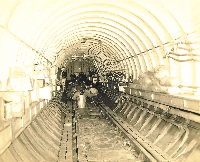
Hangar interior of I 401
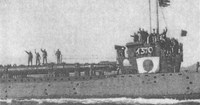
one of the IJN Cargo Submarines which had no TT tubes but carried Kaiten's on deck as armament
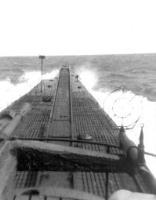
I 401 at sea underway from the bridge

View Aft from Bow of I 401 along launching rail of plane catapault
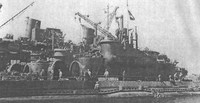
3 I 400 class boats alongside (possibly in Germany)
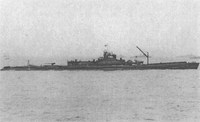
I 401 with plane on foredeck, from a published journal of one of the I 400 IJN Japanese skippers in russian link below
http://www.pacerfarm.org/i-400/i-400.htm
THE TRANSPACIFIC VOYAGE OF H.I.J.M.S. I-400
[ed. notes: The document on which this page was based was to have formed the nucleus of Tom Paine's memoirs. It began as a simple reply to a request for information from Commander Compton-Hall, who was then researching Submarine Warfare: Monsters & Midgets.6 It served as the basis of a short piece that appeared in the U.S. Naval Institute Proceedings in 1986. An expanded version was published privately by the Submarine Warfare Library in February 1991. He continued to work on it from time to time over several months, leading up to this version.
Thomas O. Paine died from cancer on 4 May 1992. He had continued his work on submarine bibliography up to the very end. His personal papers are in the Manuscript Division of the Library of Congress in Washington DC; his massive Submarine Library is now a special collection of the Nimitz Library in the U.S. Naval Academy in Annapolis MD. His biography is online at the NASA History site. Had he lived to see the flowering of the 'net, surely he would have made excellent use of it for sharing his wealth of information about submarines, space travel, and the many other subjects in which he took a lively interest. This page is but a piece, a very small piece, of what he would have done.
This saga recounts my adventures during the last voyage of His Imperial Japanese Majesty's Sensuikan Toku (Special Submarines). In 1945 I returned from World War II as Executive Officer and Navigator of the U.S. Navy prize crew in one of these aircraft-carrying giants: H.I.J.M.S. I-400. Sailing her from Sasebo, Occupied Japan, to Pearl Harbor, Territory of Hawaii, seemed a fitting finale to my career in the Submarine Service.
I'll begin by describing Japan's Top Secret submersible aircraft carriers, summarize their operational history, recount my experience in the Occupation of Japan, explain how our prize crew learned to operate the unusual I-boats, and tell the tale of I-400's eventful transpacific passage. An abridged version of this yarn has been published in U.S.N.I. Proceedings.1
The March 2005 discovery of the wreck of the I-401 prompted updates to the Wikipedia I-400 class submarine page.
The Russian Miletara Project site has what appears to be an online digest of Commander Hashimoto's memoirs including this photo of the I-401 with Seiran on catapault (see also this colourised view) and of I-400 class boats docking and moored to a sub tender with their hangar doors open.
http://militera.lib.ru/memo/other/hashimoto/
This memoir of I-14 Prize crew member Vic Webb
memoir of I-14 Prize crew member Vic Webb
and this memoir of I-401 Prize crew member Paul Wittmer.
memoir of I-401 Prize crew member Paul Wittmer.
--------------------------------------------------------------------------------
The I-400 is cited and illustrated in the World Aircraft Carrier page on Andrew Toppan's hazegray.org site.
Craig Burke's Imperial Japanese Navy site contains both a factual I-400 history page
and an interesting fictional I-400 alternative history page on his "Admiral Fura****a" site.
The one surviving Aichi M6A1 Seiran aircraft was restored by the U.S. National Air & Space Museum; see
www.nasm.si.edu/research/aero/aircraft/aichi_serian.htm .
Prints can be ordered of this John Meeks painting of the I-401 crew preparing to jettison a Seiran aircraft at sea before surrendering.
For a detailed model of the I-400 see home.catv.ne.jp/dd/nekonii/topics/p-tpic12.htm.
To see Jim Gordon's I-400 model adapted from an Aoshima kit see
www.steelnavy.com/I400.htm
Chris Alfred's Seiran model set in a I-400 hull segment diorama can be seen on the j-aircraft Ships Gallery page.
and here is the best so far: a pic of actual Japanese sub crew in the hangar of IJN 401

Living Conditions on IJN subs ..continued:
Dorr Carpenter and Norman Polmar's book Submarines of the Imperial Japanese Navy (Annapolis, Maryland: Naval Institute Press, 1986).
"Submarine crews, as well as the rest of the seagoing navy, tended to have preferential treatment with respect to food and cigarettes. At sea the submariners had a diet of boiled white rice, pickled vegetables, dried seaweed, eggs, beef, pork, various fish, and usually for breakfast, miso-shiro, a vegetable soup. Refrigeration was severely limited, and fresh meat, fish, and vegetables would be exhausted in about a week, after which canned food was the staple. There was little coffee but plenty of tea. Officers and men generally ate the same food, their daily submarine ration amounting to some 3,300 calories, quite high for wartime Japan. Sake and beer were available to submarine crews ashore, while at sea a commanding officer could issue alcohol under special conditions. But drunkenness ashore or afloat was not tolerated.
Life in the cramped, un-air-conditioned submarines was difficult. On long deployments bags of rice and canned food filled every available space, and just moving through the submarine was a difficult task. The newer boats had cooling systems; the older craft were always very humid. Rats were common on board."
There was only a very limited Fresh water ration on the IJN submarines, so washing was only done when they could swim in the sea - they also had only a very primitive Heads which would not function when submerged, hence the somewhat challenging conditions in the I-Boats.
------------------------
Discussion on Tully's Port
http://propnturret.com/tully/viewtop...c21e5d02baac11
about living conditions on IJN subs..this following was the personal opinion of one poster and his comments are not supported by other evidence..(the IJN ran very clean ships, and there was in fact ample water supply on the I 400's as noted later on in the source he is quoting....but such prejudices abound in discussion of IJN to this day sadly)
Referring to the IJN 400 from the journal of Tom Paine desribed above.
"After she was taken over from the Japanese on her way home from patrol you can imagine that the I-400 required a massive clean-up from stem to stern. The field day started with all hands moving aboard the U.S.S. Proteus, after which cylinders of fumigating gas were opened in every compartment and the boat sealed. Next morning bushel after bushel of dead rats and cockroaches were swept up. I'd noted with some revulsion on the Ha-boats the occasional rat leaping through a hatch from compartment to compartment, and hordes of scurrying roaches when a light was switched on, but I'd no idea that these boats carried so many verminous shipmates on patrol. If the I-400 had been rigged for dive when the rats and roaches were thrown overboard the Diving Officer would have had to order: Flood two hundred pounds to Auxiliary Tank from sea. "
I believe this is the reason why U-Boat personnel were not allowed on board I-8 or I-30 when they docked in France, as the Japanese Officers and Embassy personnel thought they would lose face by showing anyone inside the Submarine.
Your point about the better conditions on USN Ships over Royal Navy ones is absolutely true, by and large, not helped by the fact that some ships were transferred direct from Arctic Convoy duty to the Indian Ocean after European Hostilities ceased - they had plenty of Heating but no Air Conditioning, making things a little challenging for the Crews!
At least the Royal Navy Submarines that started to arrive in the Indian Ocean from late 1943 onwards were transferred from the Mediterranean, so were used to the kind of conditions they encountered (although the high humidity played havoc with any electronics they had).
A great point, made elsewhere, was that the key reason for installing Air Conditioning was to improve the reliability of the various items of Electronic Equipment used in the ships, and not Crew Comfort (although the siting of this equipment by some left a lot to be desired - for example, Type IX U-Boats had a key item of Electronic Equipment sited directly below the Main Hatchway, so was drenched in sea water every time they opened the hatch!).
----------------------------------
rebuttal from same forum:
If you read the NTJ Reports they point out that living quarters were cramped by western standards, but the ships that were still manned were clean throughout. In one of them a team went to RYUHO and commented on how neat their spare parts lockers were and that the decks were waxed, etc.